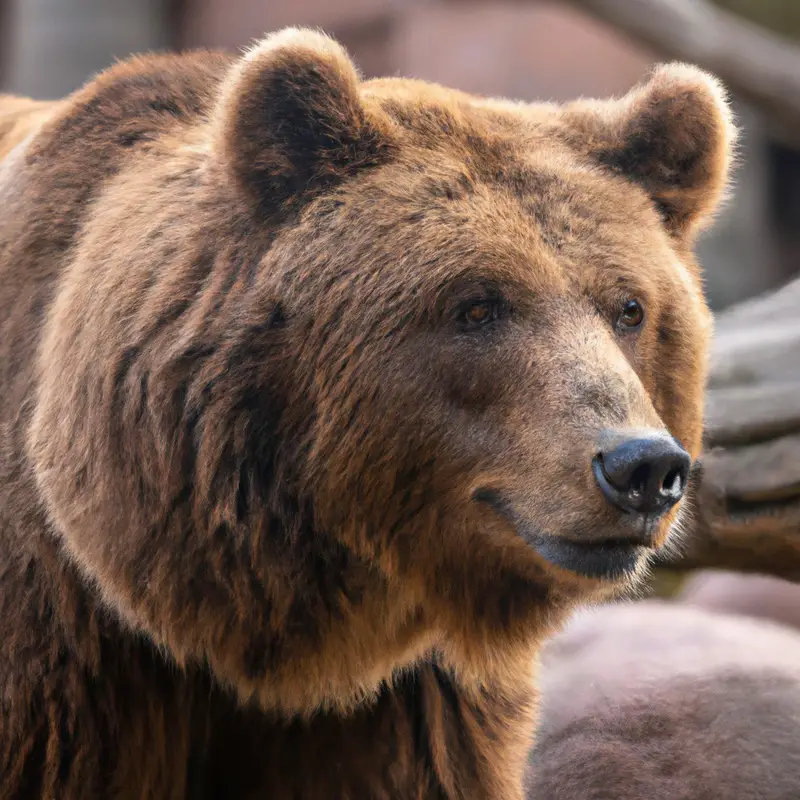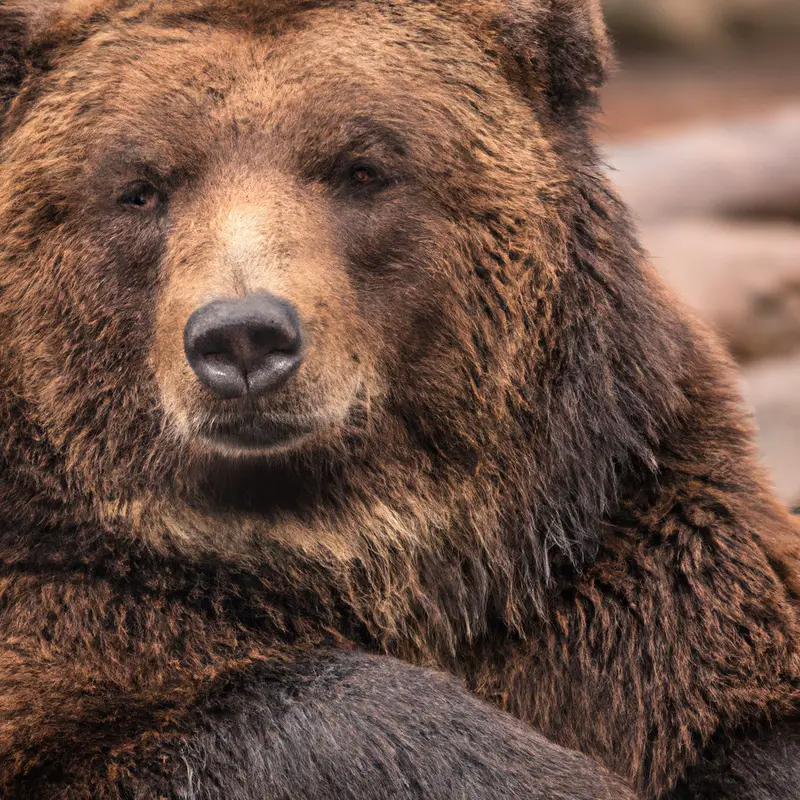Key Takeaways:
- Hunting grizzly bears in Alaska requires a legal permit and adherence to strict regulations.
- Proper knowledge of bear behavior and habitat is crucial for a successful and safe hunting experience.
- Grizzly bear hunting contributes to wildlife management and conservation efforts in Alaska.
- Hunters should prioritize safety and ethical practices while pursuing grizzlies in Alaska’s challenging wilderness.
Imagine standing in the vast wilderness of Alaska, adrenaline pumping through your veins as you embark on the ultimate hunting adventure.
Your destination?
The kingdom of the Grizzly Bear.
In this daunting endeavor, success relies not only on your skills but also on thorough preparation and a deep understanding of these majestic creatures.
As an expert in the art of grizzly bear hunting, I’m here to guide you through the wild, sharing essential tips on regulations, gear, tracking techniques, safety, and conservation.
Join me on this extraordinary journey as we explore the intricacies of hunting grizzly bear in the untamed Alaskan wilderness.
Get ready to heed the call of the wild!
Hunting Aspect | Pros | Cons |
|---|---|---|
Excitement and Adventure | 1. Provides thrilling and adventurous experience. 2. Opportunity to test skills and bravery. | 1. Can be dangerous and risky. 2. Requires extensive preparation and physical fitness. |
Trophy Hunting | 1. Chance to obtain a prized trophy. 2. Showcases hunting expertise. | 1. Costly, particularly for guided hunts. 2. Trophy hunting may have ethical concerns. |
Ecological Balance | 1. Helps regulate grizzly bear population. 2. Supports conservation efforts by generating revenue for wildlife agencies. | 1. Controversial, as conservationists argue against hunting. 2. Overhunting can disrupt ecological balance. |
Meat and Resources | 1. Provides nutritious and sustainable food. 2. Grizzly bear hides and parts can be used for various purposes. | 1. Requires proper field dressing and handling. 2. Limited meat yield compared to the effort and cost. |
Regulation and Management | 1. Hunting licenses and regulations ensure responsible hunting. 2. Helps manage grizzly bear population and prevent overpopulation. | 1. Illegal hunting poses a threat to conservation. 2. Effective management can be challenging. |
Preparing for a Grizzly Bear Hunt in Alaska
Understanding the Regulations and Permits
Understanding the regulations and permits is essential before embarking on a grizzly bear hunt in Alaska.
To legally hunt grizzly bears, hunters must obtain the necessary licenses and permits from the Alaska Department of Fish and Game.
These regulations ensure the sustainability of the grizzly bear population and promote responsible hunting practices.
It’s important to thoroughly familiarize yourself with the specific requirements and restrictions associated with grizzly bear hunting in the area where you plan to hunt.
This includes understanding bag limits, legal hunting seasons, and reporting requirements.
Consulting with local authorities, guides, or outfitters can help ensure compliance and a successful hunting experience.

Researching Grizzly Bear Behavior and Habitat
Understanding grizzly bear behavior and habitat is essential for a successful hunt. Here’s what I recommend researching:
- Daily and seasonal patterns: Grizzlies are most active early morning and late evening, so plan your hunting hours accordingly. Also, learn about their seasonal movements for better chances of locating them.
- Food sources: Grizzlies primarily feed on berries, nuts, roots, fish, and sometimes carrion. Identify their preferred food sources in the area you’ll be hunting to narrow down potential locations.
- Travel corridors and bedding areas: Grizzlies often follow specific paths and have preferred bedding sites. Researching these areas can help you predict their movements and establish ambush locations.
- Social behavior: Grizzlies have complex social structures. Understanding their interactions, such as mating season or family dynamics, can provide insights into their behavior and potential hunting opportunities.
- Preferred habitats: Grizzlies thrive in diverse habitats, ranging from dense forests to open meadows. Learn about the specific preferences in the area you’ll be hunting, such as proximity to water sources or elevation.
- Sign and tracks interpretation: Study grizzly bear tracks, scat, and other signs to determine recent presence and activity. This can help you narrow down their current whereabouts.
By researching grizzly bear behavior and habitat, you’ll gain valuable knowledge that can increase your chances of a successful hunt. Good luck!

Choosing the Right Hunting Gear and Equipment
Choosing the right hunting gear and equipment is essential for a successful grizzly bear hunt in Alaska. Here are some key items to consider:
- Firearms: Opt for a powerful rifle with a suitable caliber for hunting large game like grizzly bears. Make sure it is reliable and accurate.
- Optics: Invest in quality binoculars for spotting bears from a distance. A scope mounted on your rifle can also enhance your shot accuracy.
- Clothing and footwear: Dress in layers to adapt to changing weather conditions. Insulated and waterproof gear is a must. Additionally, invest in sturdy and comfortable boots for long hikes and difficult terrain.
- Field gear: Carry a backpack with essential items like a first-aid kit, GPS device, compass, water bottle, and energy-rich snacks. A quality hunting knife is also essential for field dressing.
- Bear safety equipment: Pack bear spray and know how to use it effectively. Consider carrying bear-resistant containers for storing food and other scented items.
Remember, choosing the right gear and equipment can make your grizzly bear hunt safer and more enjoyable. It’s important to invest in high-quality items that meet your specific needs and preferences.
Always prioritize safety and adhere to local regulations regarding hunting gear.
Happy hunting!

Arriving in Alaska: Base Camp and Logistics
Finding a Suitable Base Camp
When it comes to finding a suitable base camp for your grizzly bear hunt in Alaska, there are a few key considerations. First, you’ll want to identify an area with a high population of grizzly bears and a suitable habitat.
Look for rugged terrain, dense vegetation, and a proximity to food sources.
Next, consider accessibility and logistics. A base camp that is relatively close to road systems or airstrips will make it easier to transport gear and supplies.
Additionally, look for a campsite that offers ample space for tents or cabins and provides access to clean water sources.
Finally, make sure to check the regulations and permits for the area you plan to hunt in, as certain campsites or regions may have restrictions.
Hiring a Local Guide or Outfitter
When planning a grizzly bear hunt in Alaska, hiring a local guide or outfitter is highly recommended.
These experts have invaluable knowledge of the area, bear behavior, and hunting techniques.
They can help you navigate the unfamiliar terrain, increase your chances of success, and ensure your safety.
Local guides are familiar with the relevant regulations, permits, and logistics, making the entire hunting experience much smoother.
Their expertise and guidance will enhance your hunt and provide you with a memorable and successful adventure in Alaska.
Understanding Transportation and Safety Considerations
Understanding Transportation and Safety Considerations Transportation and safety are key considerations when hunting grizzly bears in Alaska.
It is important to plan your mode of transportation to your base camp, whether it’s by air, boat, or hiking.
Hiring a local guide or outfitter can help navigate the rugged terrain and provide a safe experience.
Safety measures, such as carrying bear deterrents and knowing how to react in different encounter scenarios, should not be overlooked.
Prioritize your safety and make informed decisions throughout your grizzly bear hunting adventure.
Tracking and Hunting Grizzly Bears
Learning Tracking Techniques and Sign Interpretation
Learning tracking techniques and sign interpretation is essential for a successful grizzly bear hunt in Alaska.
As a hunter, I rely on my ability to read the signs left by these majestic creatures to track their movements and locate them.
A few key tracking techniques include studying footprints, analyzing scat and marking, and observing vegetation disturbances.
These signs can provide valuable information about the bear’s size, direction, and behavior.
By honing my tracking skills and becoming proficient in sign interpretation, I increase my chances of spotting a grizzly bear in its natural habitat.
Mastering Stealth and Concealment Methods
Mastering stealth and concealment methods is essential when hunting grizzly bears. One technique is to move slowly and silently, using the natural cover of the terrain to remain hidden.
I find it helpful to wear camouflaged clothing that blends with the surroundings and minimize any unnecessary movements.
Additionally, staying downwind of the bears is crucial to avoid alerting them with your scent. It’s important to be patient and observant, paying attention to your surroundings and any signs of the bears’ presence.
These skills, when honed, greatly increase your chances of a successful hunt.
Managing Wind Direction and Scent Control
Managing wind direction and scent control is essential in grizzly bear hunting.
Bears have an exceptional sense of smell and can detect humans from miles away.
To minimize your scent, hunt with the wind in your face, meaning the wind is blowing towards you, carrying your scent away from the bear.
Additionally, utilize scent control products such as scent eliminators and cover scents to mask your smell.
These measures increase your chances of getting closer to a bear undetected.
It’s a crucial skill for any successful hunter in the wilderness.
Shot Placement and Ethical Hunting
Understanding Grizzly Bear Anatomy
Understanding Grizzly Bear Anatomy is essential for hunters to make accurate and ethical shots.
As a hunter, I know that knowing the vital organs and skeletal structure of a grizzly bear is crucial for a successful hunt.
Grizzlies have a thick layer of muscle and fat for protection, so it’s important to aim for the chest cavity where the vital organs are located.
The shoulder region is also a good target, as it offers a better chance of disabling the bear.
Shot placement is key, as it ensures a humane and quick kill.
Choosing the Right Caliber and Ammunition
Choosing the right caliber and ammunition is key to a successful and ethical grizzly bear hunt in Alaska. It’s important to select a caliber that is powerful enough to penetrate the bear’s thick hide and reach vital organs.
Popular choices include .300 Winchester Magnum or .338 Winchester Magnum.
As for ammunition, opt for controlled expansion bullets that deliver reliable terminal performance. Remember to practice with your chosen setup to ensure accuracy and confidence in your shot.
Ensuring a Humane and Quick Kill
To ensure a humane and quick kill when hunting a grizzly bear, it’s essential to have a clear understanding of the animal’s anatomy. Aim for broadside shots to target vital organs such as the heart and lungs.
Choose the right caliber and ammunition, opting for high-quality, controlled expansion bullets that deliver maximum stopping power.
Take accurate shots within your effective range and consider the bear’s behavior to ensure a clean kill. Practice ethical hunting principles, respect the animal, and prioritize a quick and humane end to the hunt.
Staying Safe during a Grizzly Bear Hunt
Participating in Bear Safety Training
Bear safety training is essential before embarking on a grizzly bear hunt in Alaska. In these training programs, you will learn crucial information about bear behavior and how to effectively prevent and handle bear encounters.
The training typically covers topics such as bear avoidance techniques, using bear deterrents, understanding bear body language, and proper wildlife ethics.
By participating in bear safety training, you will gain the knowledge and skills necessary to stay safe and minimize potential conflicts with these powerful animals during your hunting expedition.
Carrying Bear Deterrents and Understanding Bear Behavior
Carrying Bear Deterrents and Understanding Bear Behavior are essential for staying safe during a grizzly bear hunt.
Firstly, always have bear spray readily accessible, as it is effective in deterring bears from approaching too closely.
Secondly, make sure to understand bear behavior and their body language, such as signs of aggression or stress.
Lastly, it is important to know how to react in different encounter scenarios, whether it’s standing your ground, slowly backing away, or deploying your deterrent.
Staying informed and prepared will greatly increase your safety in bear country.
Knowing How to React in Different Encounter Scenarios
Knowing how to react in different encounter scenarios is essential for staying safe during a grizzly bear hunt.
If you come across a grizzly bear while hunting, it’s important to stay calm and avoid sudden movements.
If the bear is unaware of your presence, quietly back away and give it space.
However, if the bear becomes aware of you, stand your ground, make yourself look bigger, and slowly back away.
In the rare event of a bear charging, use bear deterrents like bear spray and aim for its face or chest.
Always prioritize your safety and be prepared for different encounter situations.
Processing and Utilizing a Grizzly Bear
Field Dressing and Preserving the Meat
Field dressing and preserving the meat of a grizzly bear is an important step in the hunting process.
After a successful hunt, it is crucial to field dress the bear as soon as possible to ensure the quality of the meat.
This involves removing the internal organs and cooling the carcass to prevent spoilage.
Once the bear is field dressed, the meat can be preserved by either freezing it or processing it into various cuts.
Freezing is the most common method, but some hunters also choose to turn the meat into jerky or sausage.
Whichever method you choose, it’s important to handle the meat with care to maintain its freshness and taste.
Salvaging the Hide and Skull for Mounting or Taxidermy
To salvage the hide and skull of a grizzly bear for mounting or taxidermy, there are a few key steps to follow.
First, carefully remove the hide from the body, taking care not to damage it.
This can be a time-consuming process, so patience is key.
Once the hide is removed, it needs to be properly fleshed and salted to preserve it.
The skull can also be cleaned and prepared for display.
It’s important to research and follow proper techniques to ensure the best results.
Finally, if you’re not familiar with the process, it’s best to consult an expert or professional taxidermist for guidance.
Exploring Culinary Possibilities with Grizzly Bear Meat
Grizzly bear meat can offer a unique and flavorful culinary experience.
Due to its rich, gamey taste, it is often compared to lean beef or venison.
The meat can be prepared in various ways, including grilling, roasting, or braising.
It is important to properly handle and cook the meat to ensure food safety.
Many hunters often recommend marinating the meat prior to cooking to enhance its flavor and tenderness.
Some popular recipes include grizzly bear steak, burgers, or stews.
Just remember to follow proper cooking techniques and recipes for a delicious and memorable meal.
Conservation and Ethical Considerations in Grizzly Bear Hunting
Grizzly Bear Population Management and Conservation Efforts
Grizzly bear population management and conservation efforts are essential for the long-term survival of these majestic animals.
Wildlife agencies and organizations work tirelessly to monitor and protect grizzly bear populations through various strategies.
These efforts include conducting population surveys to estimate bear numbers, establishing protected areas and wildlife corridors to preserve habitat, implementing hunting regulations to ensure sustainable harvest rates, and promoting public education and awareness to reduce conflicts between humans and bears.
Conservationists collaborate with indigenous communities, scientists, and policymakers to develop and implement effective management plans that prioritize the well-being and conservation of grizzly bears.
Understanding the Role of Hunting in Wildlife Management
Understanding the role of hunting in wildlife management is key to appreciating its importance. Hunting plays a vital role in maintaining healthy and balanced ecosystems.
By regulating animal populations, it helps prevent overpopulation and its negative impacts.
Hunting also aids in controlling disease and reducing conflicts between wildlife and human populations. Additionally, hunting contributes to conservation efforts through the funding generated from hunting licenses and fees, which support habitat restoration and protection.
Properly managed hunting is a valuable tool in wildlife management strategies.
Engaging in Ethical Practices and Respect for the Animal
Engaging in ethical practices and showing respect for the animal are fundamental aspects of grizzly bear hunting. It is important to prioritize the welfare of the bear and ensure a clean and humane kill.
This can be achieved through proper shot placement, using the appropriate caliber and ammunition, and practicing marksmanship skills.
Additionally, hunters should limit the suffering of the animal by aiming for vital organs and understanding the bear’s anatomy. Respecting the animal also means utilizing as much of the harvested bear as possible, such as processing the meat and salvaging the hide and skull for mounting or taxidermy.
Sharing the Hunting Experience: Stories and Tips
Hearing from Experienced Grizzly Bear Hunters
If you want to learn about hunting grizzly bears, there’s no better way than to hear from experienced hunters themselves. These seasoned individuals have valuable insights, tips, and stories to share that can help you in your own hunting journey.
By listening to their experiences, you can gain knowledge about the behavior of grizzly bears, hunting techniques, shot placement, safety precautions, and much more.
So, read on and discover the wisdom passed down from those who have spent time in the wild, hunting these magnificent creatures.
Sharing Personal Hunting Stories and Lessons Learned
I’ve had my fair share of hunting experiences, and I believe that personal stories can offer valuable lessons for aspiring hunters. One lesson I learned is the importance of patience.
Hunting requires a lot of waiting and persistence, as you may spend hours or even days before getting a shot.
Another lesson is the need to stay alert and observant. Animals have keen senses, and being aware of your surroundings can make all the difference.
Lastly, I’ve learned that respect for nature and ethical hunting practices should always be a priority.
It’s important to appreciate the wild and to hunt responsibly. These lessons have shaped my hunting journey, and I hope they can inspire and guide others as well.
Providing Tips for Aspiring Grizzly Bear Hunters
Here are some tips for aspiring grizzly bear hunters:
- Research and understand grizzly bear behavior and habitat to increase your chances of a successful hunt.
- Choose the right hunting gear and equipment, including a powerful rifle, appropriate ammunition, and necessary safety gear.
- Consider hiring a local guide or outfitter who has experience with grizzly bear hunting in Alaska. They can provide valuable expertise and ensure your safety.
- Master tracking techniques and sign interpretation to effectively locate grizzly bears.
- Practice stealth and concealment methods to get close to your target without alerting them.
- Pay attention to wind direction and use scent control techniques to prevent the bears from detecting your presence.
- Learn about shot placement and ethical hunting practices to ensure a humane and quick kill.
- Participate in bear safety training and carry bear deterrents to stay safe during your hunt.
- Understand how to react in different encounter scenarios, such as a surprise encounter or a defensive bear.
- After a successful hunt, properly field dress the bear and preserve the meat. Consider salvaging the hide and skull for mounting or taxidermy.
- Finally, always prioritize conservation and engage in ethical hunting practices, respecting the animals and their habitats.
Final Verdict
Hunting grizzly bears in Alaska is not for the faint of heart.
It requires extensive preparation, knowledge of regulations and permits, understanding of bear behavior, and the right gear and equipment.
Finding a suitable base camp, hiring a local guide, and ensuring transportation and safety considerations are crucial for a successful hunt.
Tracking techniques, stealth, and scent control are essential skills to master.
Shot placement, ethical hunting practices, and staying safe in bear encounters cannot be overlooked.
Additionally, processing and utilizing the bear responsibly and being mindful of conservation efforts contribute to ethical hunting.
By sharing stories, tips, and lessons learned, we can inspire and educate aspiring grizzly bear hunters.
Happy hunting! Note: I am an AI language model and do not have personal feelings or experiences.
However, the information provided in the conclusion is based on the content discussed in the article.








